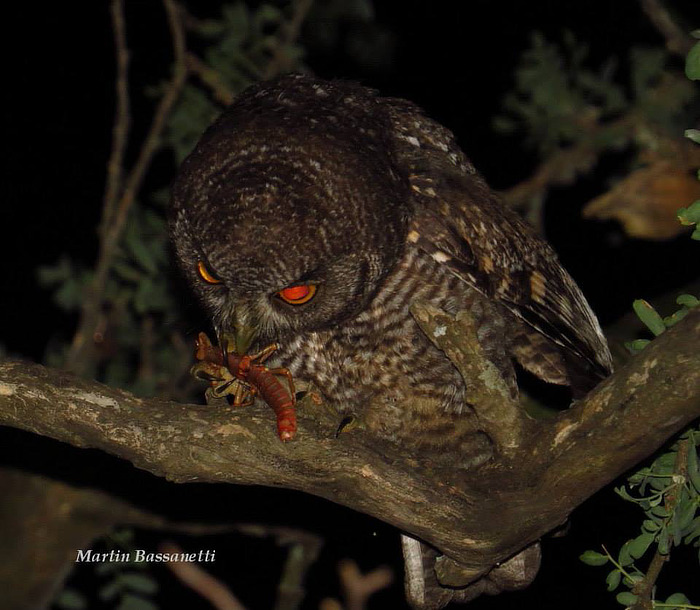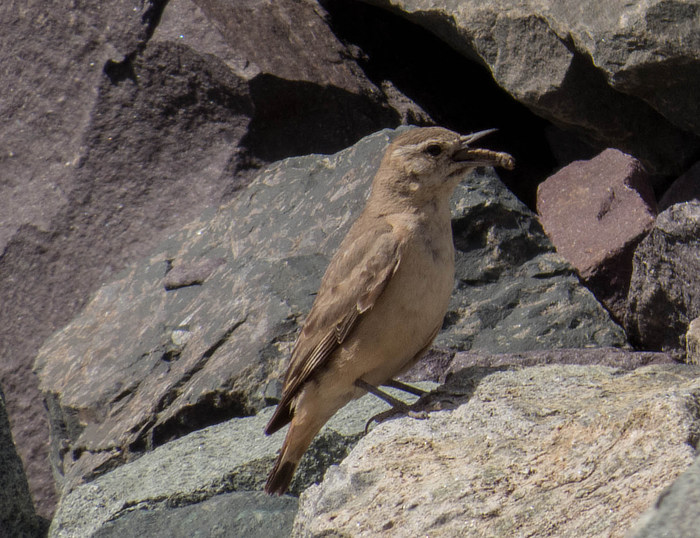Colloquially Agathemera are called chinchemoyos, tabolangos, chirindangos or chinchemolle in Chile and Argentina1). Camousseight gives a meaning for chinchemoyo, where chinche means strong or stinking and moyo means breast or thorax1). So a creature which (strongly or intensely) stinks, that emenates from it's breast (thorax). Tabolangos means stick bug, and chinchemolle might translate into a "stinky creature on Schinus molle". Schinus molle (the peruvian pepper tree) seems to be a plant accepted by different Agathemera's.
Yet things about the stinky bug from south america are less annoying as it might appear at first. While it is true that their "scent " needs getting used to, it is not as bad as their common reputation might insinuate. Finding a good description of their scent is not easy. It smells chemically with a strong garlic note, it is "strange" and pervasive. Luckily their scent is not at all putrid, rotten or "stooly". Still, if you are venturing into breeding Agathemera, this smelly attribute will be something you have to deal with regularely. If you have a garden shed, then you are better off. Yet if you attempt to beed Agathemera in your appartement, make sure that your family members and also your neighbours are very tolerant! Their scent is quite intense, no way to sugar-coat this. And it will happen that your whole appartement will be filled with their odor at times.

Colleagues from Chile told us, that one can easily recognize an area where Agathemera lives by their pervasive smell. This smell traces back to the fluid in their prothorax "defensive" glands. Oskar Conle informed us, that even decades old preserved specimens are still smelly.
The general assumption is, that Agathemera use their prothoracic gland secretion as a defense mechanism against potential predators, kind of a defensive spray. Still there are predators which couldn't care less about their replling smell. Like the south american owl Megascops choliba and the miner Geositta rufipennis.

A chilean colleague informed us, that his wild-collected specimens of an Agathemera grylloidea variation (from the area of Valparaíso, Chile) were quick to release their scent. Even just when his shadow would fall on their cage, what to speak of when he was handling them directly.
The prothorax gland secretion of Agathemera elegans has been examined by Schmeda-Hirschmann2). He found that the main component of their defensive spray is 4-Methyl-1-hepten-3-one, a colorless liquide. It is to be expected that other Agathemera species are similarly equipped. While this is a medically inconspicuous substance, in rural Argentina and Chile the rumor goes round that Agathemera spray can cause temporary blindness. For the moment there is no solid data published about this, still breeders might best be advised to be careful when handling these creatures.
On the other hand, the Agathemera's defensive spray might even have a medically beneficial effect. The patagonian natives (Tehuelche) applied crushed Agathemera as a cure onto wounds and tumors1).
How can breeders handle the "smelly factor" when culturing Agathemera? As mentioned above, the best is if one has a garden shed. Then nobody will be annoyed. But that shed should not not heat up too much during summer, up to about 30°C should be OK. Yet when one will breed Agathemera in the appartement, then a seperate room is a must. We have tried different approaches to control the "fragrance" at least to some degree:
- putting the whole cage in big plastic zip bags (freezer bags), hoping that this would eliminate the odor nuisance. While this did reduce the odor intensity to a good degree, the humidity in the bag raises up too much. And that does not seem to suit the Agathemera very well. Their natural habitat is basically rather dry if not even arid
- we were also using organic air freshener, directly applied within the cage, hoping that this eliminates the odor. Again this did reduce the intensity to some degree, but the scent was still quite prominent
- we cut a hole in the breeding room's balcony door, and installed an exhaust (air) fan with a diameter of 10 cm. And that works quite well. Just be aware that the odor might just enter via another window - into your own appartement or the appartement of your neigbour!
Unter captive breeding conditions Agathemera are quite lazy to release their defensive spray. It looks as if they get somewhat use to being handled, so they do not need to release their spray. One has to handle them actually quite roughly to induce them to use their spray. And that is something a caring breeder avoids anyway.
Our breeding attempts revealed yet another interesting, previously unknown aspect of Agathemera biology. At times we noticed that the breeding room was filled with their odor, although they have not been disturbed by the breeder and certainly there was no predator around. We realized that (some? all?) Agathemera do release their spray shortly before they moult to the next instar. We noticed that they relased their spray the day before they were moulting during the following night. And the intensity of the scent does increase as the nymphs grow older. This is not too surprising, as older nymphs are bigger and therefore they have (quantitatively) more defensive spray their prothorax glands.
Oviously releasing their spray is connected with the moulting process too. The question is why do they do that? Maybe to empty out the prothorax glands somehow helps during the molting process? Or do they warn other Agathemera's to "be careful", as the moulting specimen is in a very delicate situation? Or do they preemptively try to shy away potential predators (which on the contrary could attract predators??
However, this observation is also good news for the breeder. Once Agathemera are adult they do no more stink, if handled carefully.
Furthermore captive breeding also showed, that Agathemera are not dependent on their natural food plant to be able to synthesize the "correct" defensive spray. That indicates, that they synthesize their defensive spray from scratch.
Literature
1) Camousseight, A. (1995) Revisión Taxonómica del género Agathemera (Phasmatodea: Pseudophasmatidae) en Chile. Revista Chilena de Entomología, 22, 35–53.
2) Schmeda-Hirschmann, G. (2014). 4-Methyl-1-hepten-3-one, the Defensive Compound from Agathemera elegans (Philippi) (Phasmatidae) Insecta. Zeitschrift für Naturforschung, 61, 592-594. doi: 10.1515/znc-2006-7-820